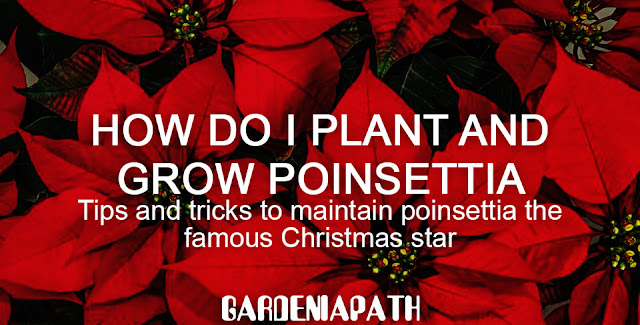With its pretty two-tone foliage, the poinsettia is THE decorative plant for the festive season par excellence. Characteristics of the poins...
With its pretty two-tone foliage, the poinsettia is THE decorative plant for the festive season par excellence.
Characteristics of the poinsettia
- Type: flower and flowering plant
- Height: from 30 to 60 cm
- Flower colors: red, white, pink, orange, yellow and cream
- Exposure desired: sunny
- Soil type: well drained, rich in humus
- Foliage: evergreen
- Vegetation: Perennial
- Maintenance: high need for light
- Sanitizer: no
- Diseases: aphids
- Varieties: poinsettia menorca, poinsettia princessia, poinsettia lilo white, poinsettia pink white
Origins and peculiarities of the poinsettia
The poinsettia (euphorbia pulcherrima) is a tropical plant native to Mexico that belongs to the euphorbiaceae family. It is also called Christmas Star or Advent Star because it blooms during the winter. In contrast to many plants cultivated for their flowers, it is the foliage of the poinsettia that makes it special: indeed, its bicolored central leaves are a real pleasure for the eyes, while its flowers are quite negligible.
The poinsettia's colorful bracts can take on many colors: red and green, pink and green, orange and green, cream and green, spotted with white... making it THE decorative houseplant for the holiday season par excellence! The poinsettia is indeed one of the most offered decorative plants during the festive season, and one of the plants that we find the most on the table runners of Christmas Eve!
Among the most common varieties of poinsettias are the poinsettia menorca (red), the poinsettia princessia (pink), the poinsettia lilo white (white) and the poinsettia pink white (pink and white). It can reach up to 80 cm in height in our latitudes, even if in its natural environment this shrub can climb up to 4 m high!
Poinsettia planting and cultivation
As a tropical plant, the poinsettia is mainly cultivated indoors. In terms of location, the plant appreciates bright situations without direct sunlight and warm rooms (between 15 and 20°C).
As far as watering the plant is concerned :
It is very important to wait until the soil of your poinsettia is dry between waterings.
The plant does not like excess moisture, so make sure that you never leave standing water in the poinsettia's bowl.
The poinsettia does not like water that is too cold, so it is best to use temperate water (minimum 20°C).
After flowering in March, water the poinsettia sparingly.
Too much water can cause the leaves to turn white and/or fall off, so don't water too heavily!
Poinsettia Care
The poinsettia is pruned after flowering, when the leaves begin to wilt and fall; this will encourage new shoots to appear and improve the next flowering. Keep only 5 to 10 cm of stems.
Re-potting is done during the resting period in spring. Be sure to choose a slightly larger pot, preferably quite heavy because the plant is very light! To help the poinsettia to bloom again, place the plant in the dark 12 to 14 hours a day until it recolors again, or wrap it in an opaque paper bag for the same amount of time.
Poinsettias multiply by cutting in the spring. Caution: Its sap is poisonous, so wear gloves when handling it!
Poinsettia diseases and pests
Cultivated as a decorative plant, the poinsettia can suffer attacks:
- Aphids, which you can get rid of by spraying the foliage with water and black soap.
- Red spiders, which will not resist an acaricide.
- Whiteflies, which feed on the sap of the plant. Fortunately, these are not resistant to nettle manure.

No comments